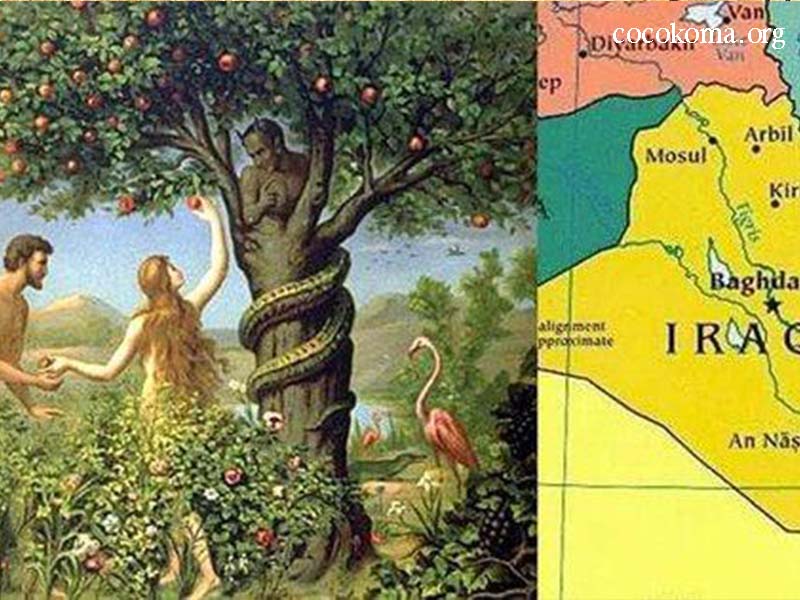The Garden of Eden has captured the imaginations of people for centuries, serving as a symbol of innocence and divine creation. Described in the Book of Genesis, this idyllic paradise is said to be the original home of Adam and Eve. Yet, the precise location of the Garden of Eden has remained a subject of intrigue, debate, and scholarly investigation throughout history. This article delves into the various theories regarding the Garden’s location, examining geographical, historical, and archaeological evidence.
The Biblical Description of the Garden of Eden
According to the Bible, specifically in Genesis 2:8-14, the Garden of Eden was planted by God in the east, and it was watered by a river that split into four branches: Pishon, Gihon, Tigris, and Euphrates. These descriptions provide a geographical framework that has led researchers and theologians to speculate about the Garden’s potential location.
The rivers mentioned in the Bible are significant. The Tigris and Euphrates are well-known rivers that flow through modern-day Iraq. However, the identities of Pishon and Gihon remain more ambiguous. Some scholars suggest that these rivers may correspond to other waterways in the region, leading to various hypotheses about the Garden’s actual site.
Theories on the Location of the Garden of Eden
Mesopotamia
The Most Popular Theory
Many scholars believe that the Garden of Eden was located in Mesopotamia, often referred to as the “Cradle of Civilization.” This region, situated between the Tigris and Euphrates rivers, is where some of the earliest known human civilizations emerged.
Archaeological evidence reveals that Mesopotamia was once lush and fertile, making it a plausible candidate for the Garden’s location. The rich soil and abundant water sources would have supported a paradise-like environment, ideal for the sustenance of early humans. Additionally, some interpretations of ancient texts suggest that the Pishon River could be associated with the Ganges or Indus Rivers, indicating a broader geographic area that could encompass parts of Mesopotamia.
The Armenian Highlands Hypothesis
Another theory posits that the Garden of Eden was situated in the Armenian Highlands, a region that encompasses parts of modern-day Turkey, Armenia, and Iran. Advocates of this theory argue that the historical accounts of the Great Flood, which displaced the biblical Adam and Eve, suggest that the Garden may have been located at a higher elevation, making the highlands a suitable candidate.
Proponents point to the region’s fertile landscape and numerous freshwater springs as indicators of an ideal environment for the Garden. Additionally, the highlands are situated close to the headwaters of the Tigris and Euphrates rivers, which aligns with the biblical description of the Garden being fed by these waterways.
The Persian Gulf Theory
Some researchers have proposed that the Garden of Eden could have been located beneath the waters of the Persian Gulf. This hypothesis is based on geological studies indicating that the region was once much larger and more fertile before rising sea levels submerged it.
Evidence suggests that the ancient landscapes of the Persian Gulf included fertile land, rivers, and lakes. Proponents of this theory argue that the shifting geological features over millennia could account for the Garden’s disappearance, making it a likely site for the biblical paradise.
The Southern Arabia Theory
Another intriguing possibility places the Garden of Eden in southern Arabia, particularly near the area known as the “Garden of Eden” in modern Yemen. This theory draws on archaeological findings that reveal ancient civilizations in the region that thrived due to agricultural practices and advanced irrigation systems.
Southern Arabia has also been noted for its rich biodiversity, which could resemble the biblical descriptions of Eden as a place of abundance and variety. The existence of rivers and valleys in this area supports the notion that it could have sustained early human life, aligning with the Garden’s depiction in biblical texts.
The Egyptian Theory
A less conventional theory suggests that the Garden of Eden may have been located in Egypt, specifically near the Nile River. The Nile has long been considered a lifeblood for the region, supporting agriculture and civilization for thousands of years.
Advocates of this theory highlight the similarities between the lush Nile Delta and the biblical descriptions of Eden. The presence of fertile land, abundant wildlife, and agricultural potential aligns with the characteristics attributed to the Garden in Genesis.
Archaeological Evidence and Discoveries
While the search for the Garden of Eden has yielded many theories, concrete archaeological evidence remains elusive. However, certain discoveries provide intriguing insights that could hint at the location of this mythical paradise.
The Fertile Crescent
The Fertile Crescent, a crescent-shaped region of fertile land encompassing parts of modern-day Iraq, Syria, Lebanon, Israel, and Jordan, is often associated with the emergence of early civilizations. This area, rich in agriculture and biodiversity, is a strong candidate for the Garden of Eden. The region’s early settlers benefited from the presence of water sources, allowing them to cultivate crops and establish thriving communities.
Ancient River Systems
Archaeological studies have uncovered ancient river systems that may align with the biblical descriptions of the rivers surrounding Eden. The identification of ancient river channels in the Mesopotamian region supports the idea that this area could have been home to a lush and verdant landscape, similar to the one described in Genesis.
Cultural Interpretations of the Garden of Eden
Beyond the geographical theories, the Garden of Eden has also inspired a wealth of cultural interpretations and representations throughout history. These interpretations reflect the diverse perspectives of different societies and their beliefs about creation, innocence, and the human condition.
Artistic Representations
Throughout art history, the Garden of Eden has been a popular subject, often depicted as an idyllic paradise filled with vibrant flora and fauna. Artists such as Botticelli and Michelangelo have portrayed the Garden as a symbol of beauty and harmony, highlighting the relationship between humanity and the divine.
These artistic interpretations often reflect the cultural values and beliefs of the time, serving as a testament to humanity’s enduring fascination with the Garden of Eden.
Literary References
The Garden of Eden has also inspired countless literary works, ranging from religious texts to modern novels. Writers have used the Garden as a metaphor for innocence, temptation, and the loss of paradise.
In John Milton’s “Paradise Lost,” for instance, the Garden becomes a central symbol representing both the beauty of creation and the consequences of disobedience. Such literary explorations emphasize the cultural significance of the Garden of Eden as more than just a physical location; it embodies deeper themes about human nature and morality.
Conclusion
The Enduring Mystique of the Garden of Eden
The question of where the Garden of Eden was located continues to captivate scholars, theologians, and curious minds alike. While various theories abound, ranging from Mesopotamia to the Persian Gulf and beyond, no definitive evidence has emerged to confirm its exact whereabouts.
What remains clear, however, is the Garden’s profound impact on human culture, spirituality, and imagination. As a symbol of paradise, the Garden of Eden transcends geographic boundaries, serving as a reminder of the complexities of human existence and our innate desire to return to a state of innocence and harmony.
In the end, the Garden of Eden may not only represent a physical place but also an eternal quest for understanding, belonging, and the search for a deeper connection with the divine. Whether viewed through the lens of faith, history, or art, the Garden of Eden remains a timeless symbol of hope, beauty, and the mysteries of life.
As we continue to explore the world around us, the legend of the Garden of Eden invites us to reflect on our origins, our choices, and the eternal pursuit of paradise in our lives.








